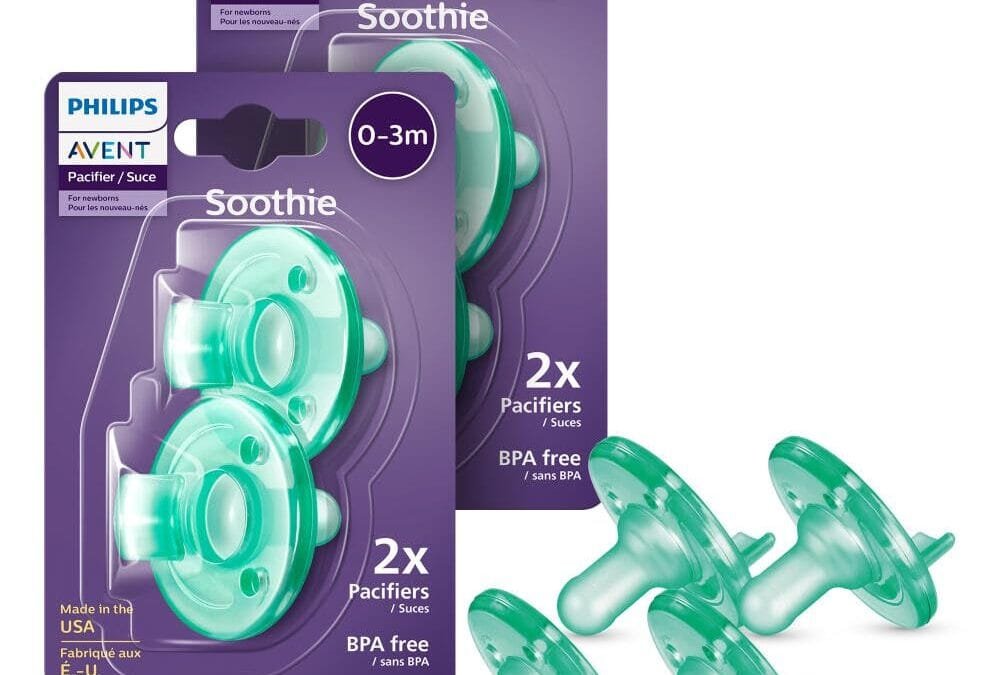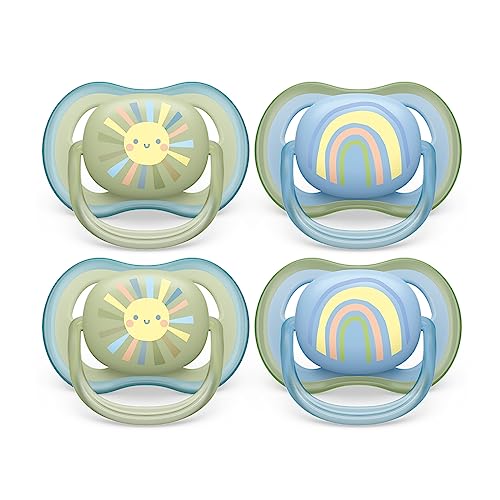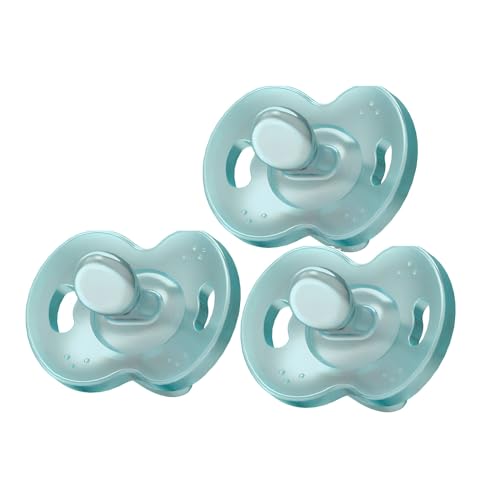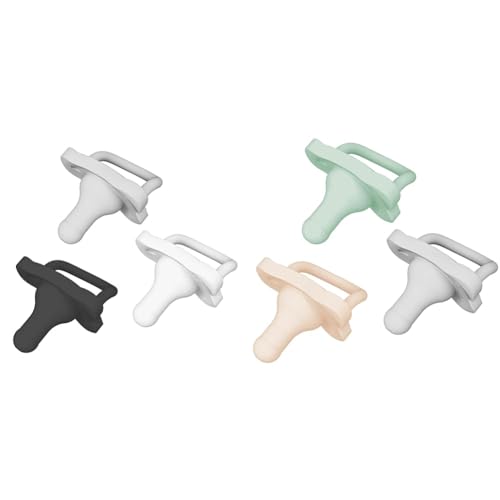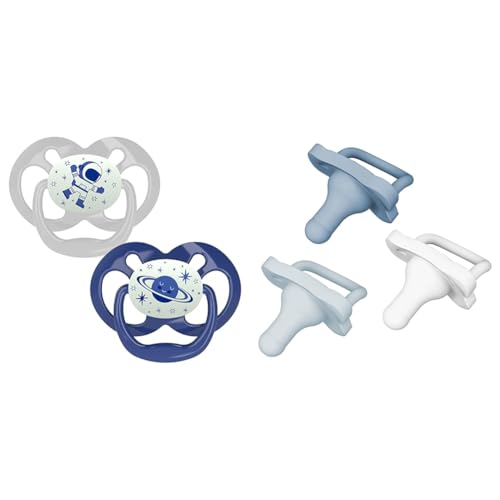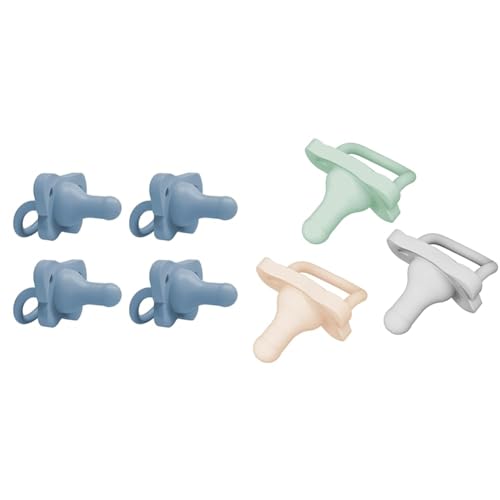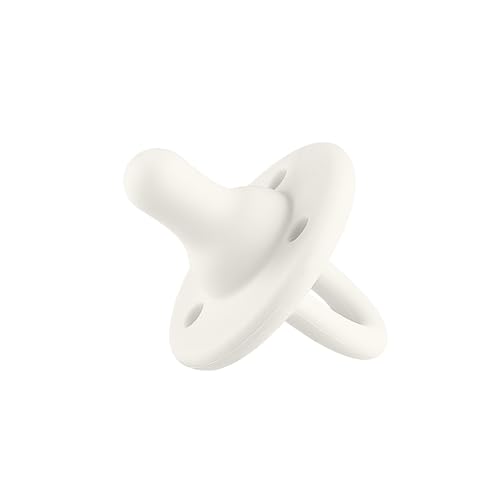New parent! Is your newborn keeping you up at night with endless fussing? Or maybe you’re just desperate for a moment of peace during the day? Trust me, I’ve been there—those early months can feel like a whirlwind of diapers, feedings, and oh-so-much crying. But here’s a little secret that saved my sanity: a good pacifier can work wonders. Specifically, pacifiers for 0-3 months are designed to soothe your tiny human instantly, tapping into their natural instincts to bring calm to the chaos. In this post, we’re diving deep into why these little lifesavers are a must-have, how to pick the perfect one, and where to snag the best options on Amazon (yes, I’ve got links for the US, UK, and Canada ready for yu!). Ready to find some relief? Let’s get started.
Why Pacifiers Are Essential for 0-3 Months Babies
Picture this: your baby’s wailing, and you’re pacing the living room at 3 a.m., wondering what’s wrong. Sound familiar? Babies are born with a powerful sucking reflex—it’s how they eat, sure, but it’s also their go-to for comfort. That’s where pacifiers for 0-3 months swoop in like tiny superheroes. They satisfy that reflex, helping your little one relax, settle down, and—hallelujah—maybe even sleep.
But it’s not just about quieting the cries (though that’s a huge perk). Studies show pacifiers can lower the risk of Sudden Infant Death Syndrome (SIDS) when used during naps or bedtime—pretty incredible, right? Pediatricians often give them a thumbs-up for this reason alone. Plus, they’re a quick fix when feeding isn’t an option—like during a car ride or a grocery run. Honestly, as a sleep-deprived mom, I’d have handed out medals to whoever invented these things.
The Benefits at a Glance
- Instant Soothing: Calms fussiness in seconds.
- Sleep Aid: Helps babies drift off (and stay asleep longer).
- SIDS Reduction: A simple way to boost safety during sleep.
- Parental Sanity: Gives you a breather when you need it most.
Choosing the Right Pacifier: What You Need to Know
Okay, so you’re sold on getting a pacifier—but with a million options out there, how do you choose? Don’t worry, I’ve got your back. Here’s what to look for when shopping for newborn pacifiers:
Size Matters
Pacifiers are sized by age, and for 0-3 months, you’ll want one labeled specifically for newborns. Too big, and it won’t fit comfortably; too small, and it might not do the trick. Stick to the 0-3 month range—your baby’s tiny mouth will thank you.
Shape: Orthodontic vs. Traditional
- Orthodontic: These are flattened on one side to support your baby’s developing palate and teeth. Dentists love them.
- Traditional: Round and symmetrical, like a classic nipple. Simple and effective.
I tried both with my little one—orthodontic won out because she seemed to take to it faster, but every baby’s different!
Material: Silicone or Latex?
- Silicone: Tough, long-lasting, and less likely to trigger allergies. My top pick.
- Latex: Softer and more flexible, but it wears out quicker and might not suit sensitive kiddos.
Design Details
Look for a one-piece design—it’s safer since there’s no chance of it breaking apart. Ventilation holes on the shield? Non-negotiable. They keep air flowing and prevent rashes on those chubby cheeks.
Pro tip: Babies can be picky, so don’t be shocked if you end up testing a few before finding the one. It’s like dating, but for pacifiers!
Top Pacifiers for 0-3 Months: Our Amazon Favorites
Alright, let’s get to the good stuff—here are some of the best pacifiers for babies aged 0-3 months that you can grab on Amazon right now. I’ve rounded up options that parents rave about, complete with pros, cons, and handy links. (Full disclosure: these are affiliate links, so I might earn a small commission if you buy—no extra cost to you!)
1. Philips Avent Soothie Pacifier
- Features: Medical-grade silicone, one-piece design, orthodontic shape.
- Pros: Super durable, easy to sterilize, and hospital-trusted.
- Cons: Some babies might not love the firmer nipple.
This was my go-to—it’s practically indestructible, and the bright colors made it easy to spot in the diaper bag!
2. MAM Start Newborn Pacifier
- Features: Extra small, lightweight, BPA-free silicone nipple.
- Pros: Perfect for tiny mouths, adorable designs.
- Cons: Wears out faster than some competitors.
3. NUK Newborn Orthodontic Pacifier
- Features: Orthodontic shape, heart-shaped shield, glow-in-the-dark option.
- Pros: Great for oral development, a lifesaver for nighttime hunts.
- Cons: The shield might feel bulky for some newborns.
4. Dr. Brown’s HappyPaci
- Features: Soft silicone, contoured shield, dishwasher-safe.
- Pros: Gentle on delicate skin, cleaning’s a breeze.
- Cons: Not as many fun colors to choose from.
5. Tommee Tippee Closer to Nature Pacifier
- Features: Symmetrical orthodontic design, BPA-free, mimics breastfeeding.
- Pros: Ideal for breastfed babies, super soft.
- Cons: Some babies spit it out at first.
Want a quick side-by-side look? [Insert infographic: Comparison chart of top 5 pacifiers – Alt text: Table comparing features of Philips Avent, MAM, NUK, Dr. Brown’s, and Tommee Tippee pacifiers]
These soothing pacifiers cater to different needs—whether you want durability, cuteness, or something breastfeeding-friendly, there’s an option here for you. Click those links and snag one today!
How to Introduce a Pacifier Like a Pro
So, you’ve got your shiny new pacifier—now what? Introducing it can feel like a mini adventure, but don’t stress. Here’s how to make it smooth:
Timing Is Everything
If you’re breastfeeding, hold off until nursing’s a breeze—usually around 3-4 weeks. This avoids any nipple confusion drama. Bottle-feeding? You can start sooner if you like.
The Gentle Approach
Offer it when your baby’s calm, not starving or mid-meltdown. Hold it to their lips softly—if they take it, awesome! If not, no biggie. Try again later. My daughter rejected her first pacifier like it was an insult, but a week later, she was hooked.
Common Worries
- Nipple Confusion: Rare if breastfeeding’s established—most babies figure it out.
- Dependency: Sure, they might love it, but you can wean them off later. No need to panic.
Patience is key. You’ve got this!
Safety Tips and Best Practices
Let’s keep things safe—because nothing matters more than your baby’s well-being. Here’s how to use pacifiers for 0-3 months like a pro:
- Cleaning: Sterilize before the first use (boil for 5 minutes or use a sterilizer). After that, wash with hot soapy water daily. I’d toss mine in the dishwasher sometimes—lazy mom hack!
- Replacement: Swap it out every 2 months, or sooner if you spot cracks or tears. Worn pacifiers can be a choking hazard.
- Safety No-Nos: Skip the ribbons or strings around the neck—strangulation risk alert! Use a pacifier clip instead.
Simple stuff, but it keeps your baby happy and healthy.
Conclusion: Your Baby Deserves the Best—Act Now!
So, there you have it—everything you need to know about pacifiers for 0-3 months. They’re not just a tool; they’re a ticket to calmer days and quieter nights. From soothing that sucking reflex to reducing SIDS risks, these little gems are a new parent’s best friend. Pick the right size, shape, and material, and you’re golden. And those top picks I shared? They’re waiting for you on Amazon, ready to ship to the US, UK, or Canada.
Don’t wait for the next meltdown—grab one of these best pacifiers for babies today and see the difference for yourself.


